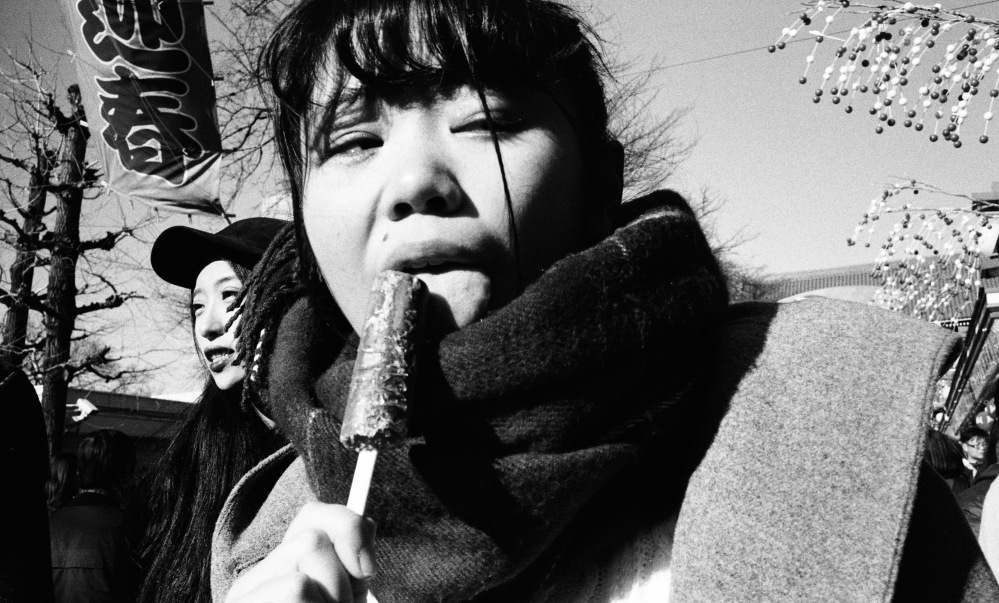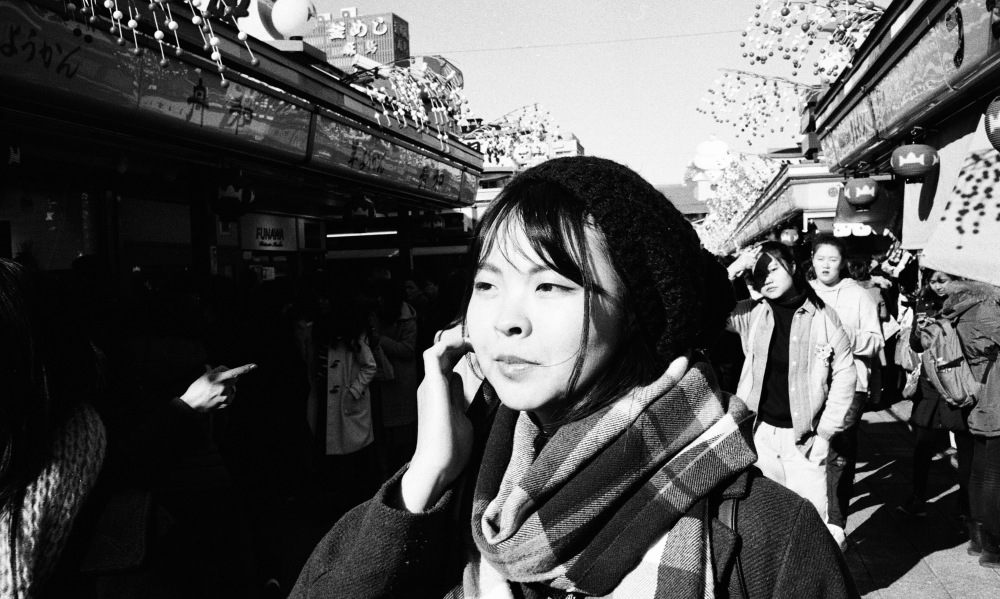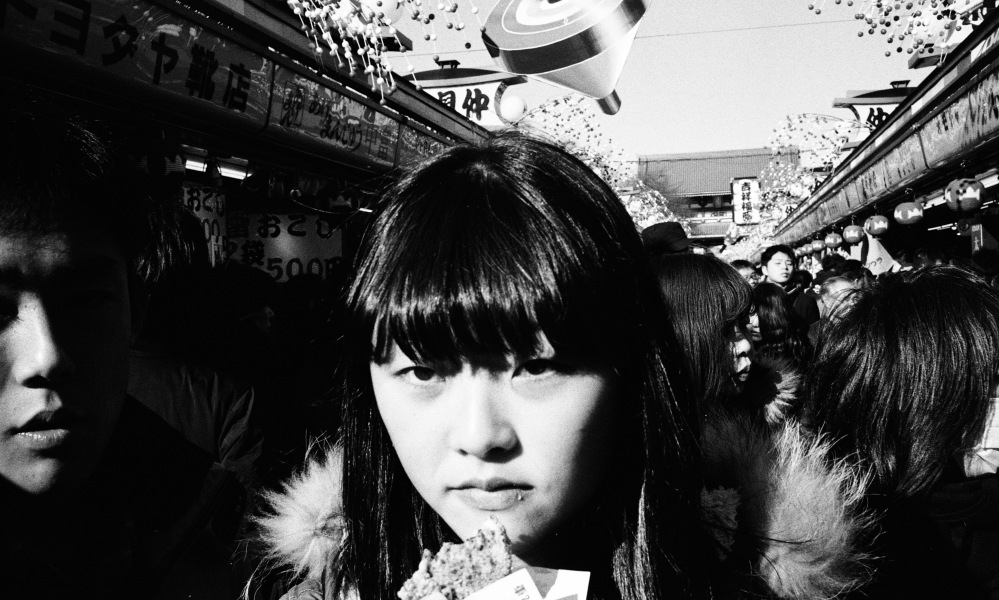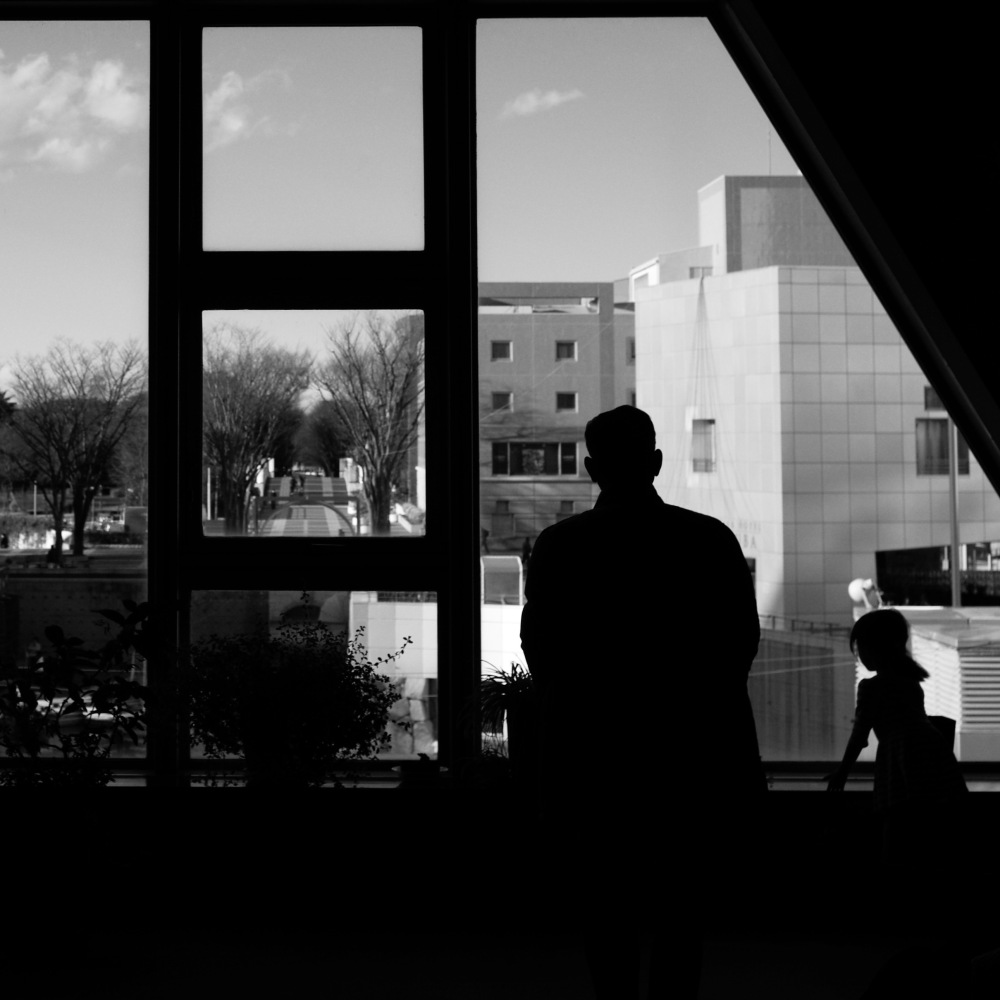Composing in “threes,” a street photography technique I learned at a recent workshop in Kyoto, is harder than it sounds. While this works for many photographers, looking for subjects in threes netted me a lot of boring photos. So I decided to change my approach, and think of three as a concept rather than a number. But what concept? The first concept that came to mind was the three elements of flower arrangement in Japanese Ikebana. For me, that yielded great results.
The three elements of shin-soe-hikae is a central concept in Ikebana that serves as guidance for creating an arrangement. All Ikebana arrangements contain the three elements of shin-soe-hikae. the three elements of an Ikebana arrangement. I have always been fascinated by the beauty of balance in asymmetry that shin-soe-hikae produces.
Shin-soe-hikae are sometimes interpreted as heaven, earth and people. However, I don’t buy that, because it just doesn’t make sense linguistically to me. In Japanese, shin (真) means truth, sincerity, authenticity, and real. Soe (副え) means a supporting addition to whatever might be primary. Hikae (控え)means restraint, reduction or to wait in preparedness to act when help is needed. In contrast to soe, Hikae is a supporting subtraction, or perhaps a latent potential. So to me, the Ikebana concept of balance is truth supported by both an addition and a subtraction, an active and a latent, or a positive and a negative.
In Ikebana, shin-soe-hikae arrangements can take different forms, like those below.

Shin tends to be the longest stem or branch, soe tends to be medium length, and hikae tends to be shortest, and closest to the base. It does not matter what order each is arranged, only that each element be present. You can see some Ikebana examples here.
Shin-Soe-Hikae in Street Photography
A photograph is a representation truth, or the real. Photography in Japanese is shashin (写真). Yes, the shin in shashin is the same shin as the shin in Ikebana. In Japanese, photography literally means a rendering of the real, or rendering truth. Shin in a photo’s composition might be a main element of truth, supported by both a proactive element of soe, and an element of restraint, reduction, or latent potential of hikae in asymmetrical balance.
I wondered what shin-soe-hikae might look like in a street photography composition. So, I loaded up my Leica M3 with a role of monochrome film, and headed out to Asakusa to find out. Have a look at some of the results.

In the photo above, the girl with the ice cream stick in the center is the shin. The woman behind her along with the lantern on the left are the soe. They are proactive, supporting the shin. The sky and the decoration on the right are the hikae, and more restrained.

In this photo above, the elements are in a different order. The woman on the right is the shin, the man she is pointing to is the hikae, and the Kaminarimon lantern in the background is the soe. It supports the reality of where this scene is.
How do I decide which element is which? Well, how does an Ikebana artist decide what will serve as each element among stems, flowers and branch that are available? I pick something and then work around what I chose.
So for example, in the first photo, I chose the girl with the ice cream to be my shin, and then worked quickly with what was around to compose the rest of the scene. In the second photo, I picked the lantern to be the soe and then waited for the shin and hikae to walk into my frame.
As you can imagine, there is a lot of serendipity involved, and you have to choose your moment in a scene that is ever-changing. There is a lot of hit and miss, but choosing one element first helps with rapid composition.
Sometimes, I choose two elements first and wait for the third. Have a look at the photo below.

In this photo, I chose the shop stalls on shaded and bright sides of the scene to be the soe and hikae respectively. I waited for a person to enter the frame to be the shin.
Below is a different attempt using the same strategy.

In this photo, the half obscured face of the man on the left enhances the hikae. The fact that part of the face is cut off by the frame, often a kind of no-no in composition, works here, because it is part of the subtraction of hikae.
Note that I don’t feel the need to use only people as elements. Objects are fine as well, as are light and shadow. A negative space can be an element. For example, have a look at the photo below. The blackness around the woman serves as the hikae.

Yet just because something is dark, doesn’t mean it has to be hikae. For example, have a look at the next photo.

In this photo the silhouettes of the man and the little girl are the shin. The lighted scene through the window is the soe, as it proactively supports the shin. The dramatic triangular window frame is the hikae, supporting the shin through subtraction.
These are just a few examples of using Ikebana concepts in street photography composition. I am going to continue developing this concept, create more work, see what I learn, and report it here.
Very interesting concept and great pictures! I must study more of this!
LikeLike